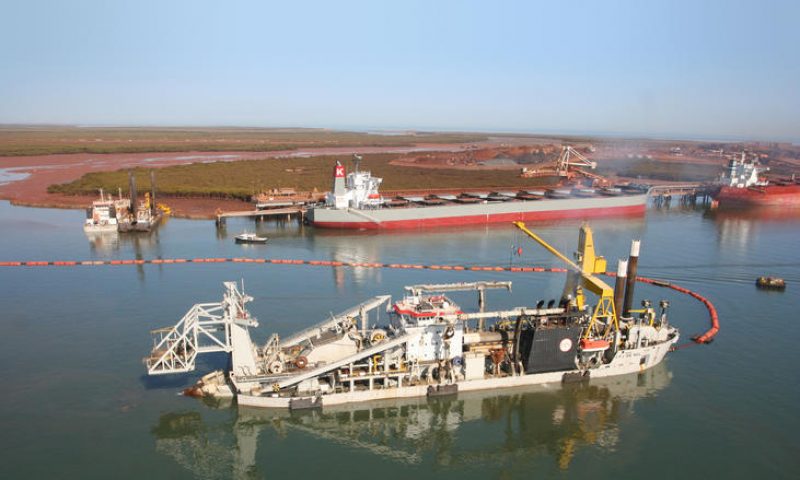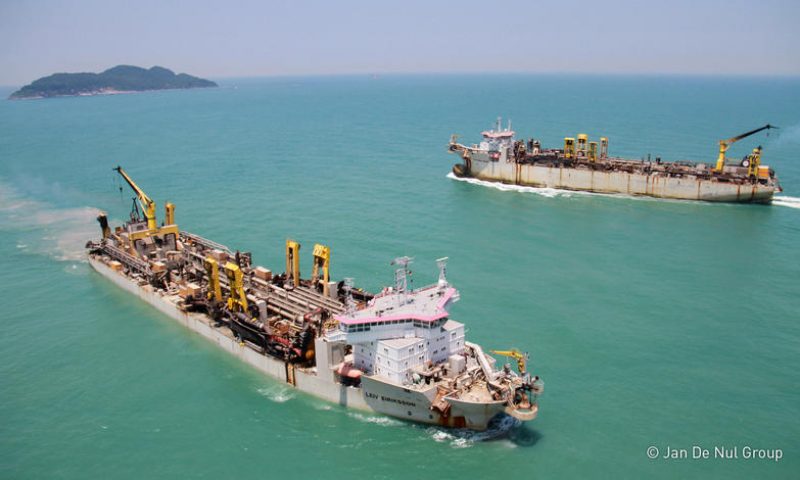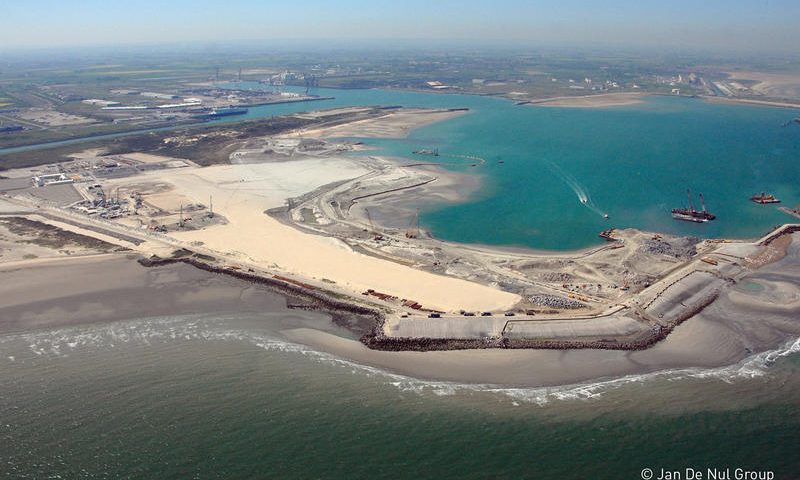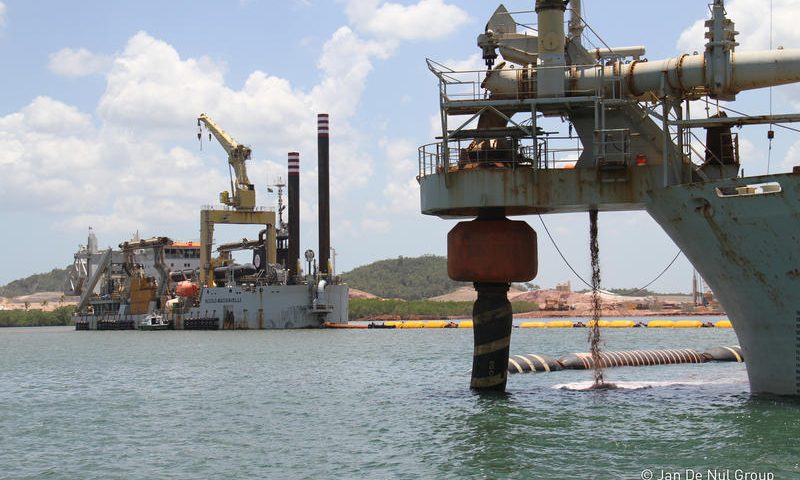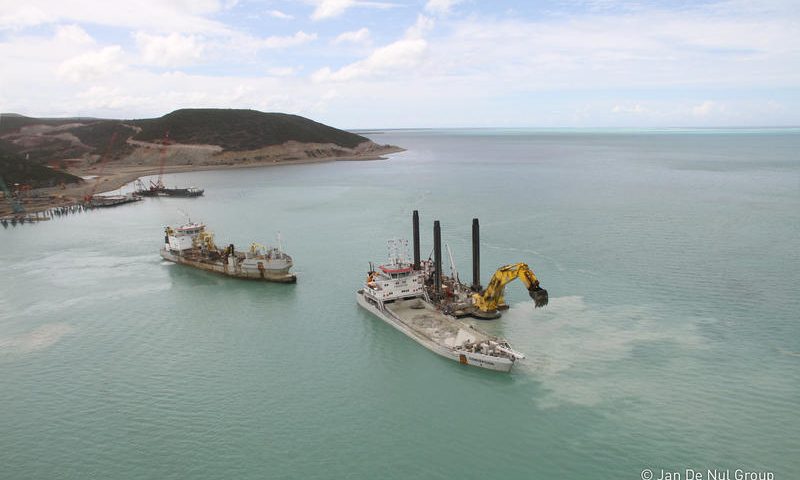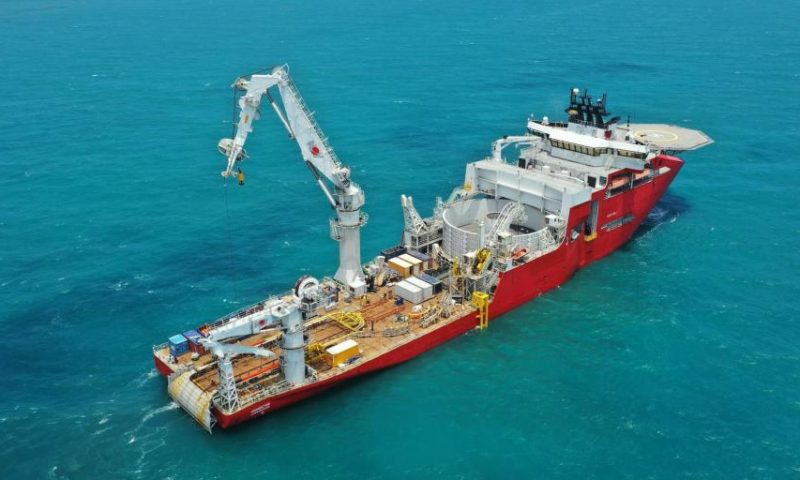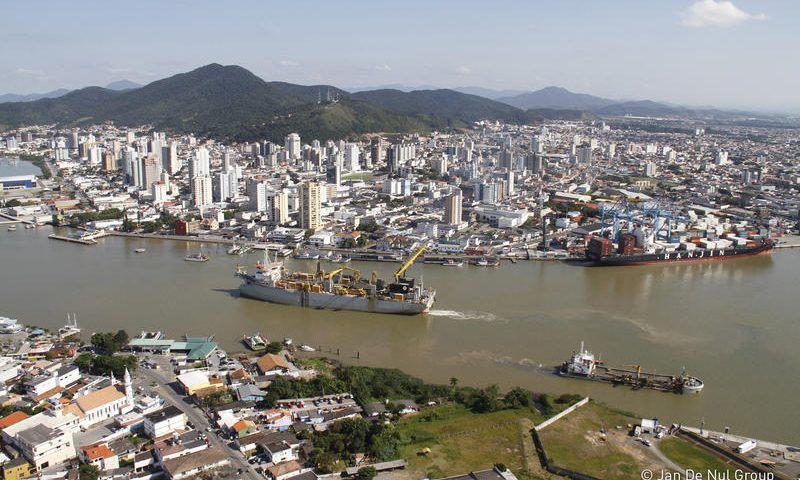
Jan De Nul Completes Liepaja Port Dredging
Jan De Nul Group completed the capital dredging works for the improvement of Liepaja Port in Latvia ahead of schedule.
In order to allow larger vessels to enter and leave the port of Liepaja fully loaded, the access channel to the port needed to be adapted. As part of the Liepaja Port Water Infrastructure Works, Jan De Nul Group was awarded the dredging works.
The scope for Jan De Nul Group entailed the removal of 2.7 million m³ of sediments to deepen the port access channel from 12.5 m to 14.5 m, and to create a new navigation channel of -14 m towards one of the main bulk terminals within the port area.
Challenging weather and soil conditions
Jan De Nul Group faced challenging weather and soil conditions during the execution of the project. Liepaja is one of the three major ports in Latvia, located along the west coast. It is known for the cold temperatures in winter and adverse weather conditions in general. A big challenge for the Jan De Nul vessels was the high waves that regularly can be observed in the Baltic Sea, especially during winter. As Liepaja’s nickname ‘The city where the wind is born’ suggests, strong winds also had an impact on the project planning.
For the dredging works, the self-propelled Cutter Suction Dredger Fernão de Magalhães, assisted by three Split Hopper Barges, was specifically chosen because of the heterogenous material in the Baltic Sea. The Fernão de Magalhães had to remove very hard-to-dredge glacial sediments of sand, clay, stone and large boulders.
Despite these challenging weather and soil conditions Jan De Nul Group was able to deliver the project in less than 9 months, 1.5 months ahead of schedule.
Mieke de Mûelenaere, Jan De Nul Project Manager of the Liepaja project: “We are proud to be able to finish the project 1.5 months ahead of schedule. Liepaja challenged us and we have succeeded. We are grateful to our colleagues of LSEZ for the constructive and positive cooperation which also led to this success.”
